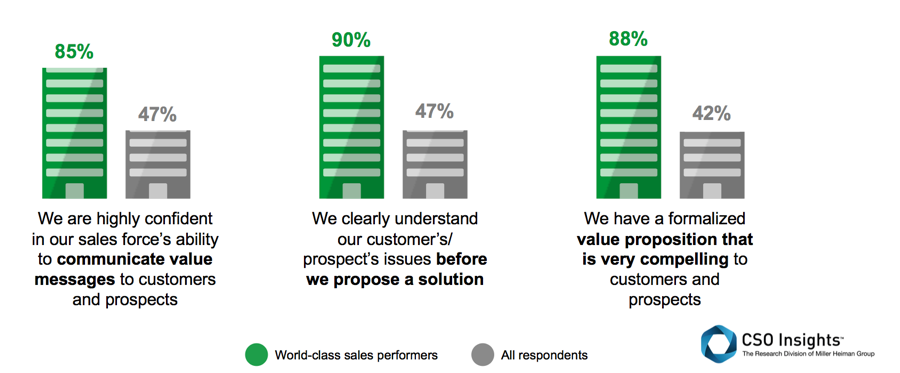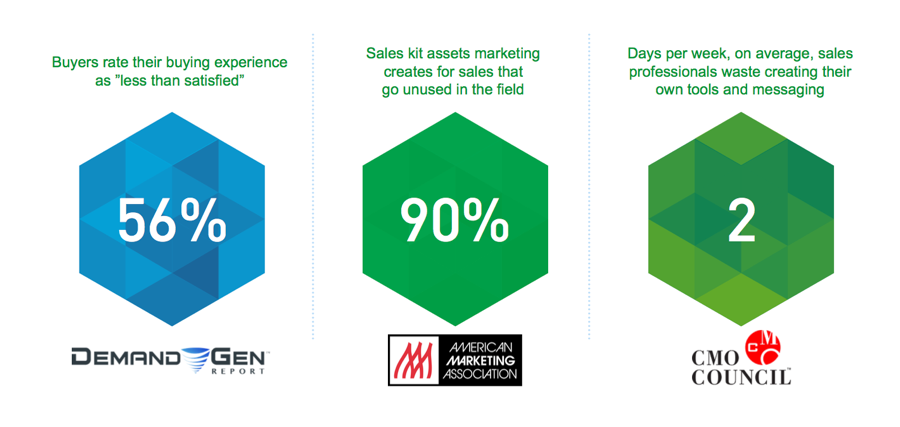Many salespeople leave most of their customer meetings with the thought, “That went pretty well.”
Yet surveyed prospects deem 89% of meetings as failures and B2B buyers believe just 8% of salespeople focus on driving “valuable” end results for the buyer. (Forrester Research) Fifty-six percent of all buyers rate their buying experience as “less than satisfied.” (DemandGenReport)
This isn’t the customer’s or prospect’s problem — this is a problem sales leaders and their teams must address, as their revenue performance hangs in the balance.
In this three-part series, we will tackle how to prepare for your meetings with buyers, how to serve your buyers during the meeting, and how to follow-up to ensure you will serve your buyers for the long haul.
How to best serve your buyers during the meeting:
By this point, you should have done more than enough research to understand your buyer’s situation. Assuming that is the case, you should be in good shape to lead a valuable meeting. That is what your customers and prospects seek after all — value. In order to ensure your value gets communicated, keep these three things in mind.
1) Position the conversation from your buyer’s point of view — not yours or your company’s.
As human beings, our conversations naturally flow from our own perspectives, based on our own experiences, knowledge and pain points. Fight the urge to follow this pattern in client conversations — because your customer or prospect meeting should be all about your customer or prospect, not about you. When you position your conversation and your pitch from their situation and perspective, you make the meeting about their needs — not your solution. You add value to their business, rather than guiding the conversation to help your own company make a sale. And, most importantly, you become a member of their team, not an outsider.
Show you truly care about their needs by being an expert in their industry. Discuss with the buyer the research you did leading up to the meeting and leverage that knowledge to share insights with them and leading practices that can enhance their process execution. And begin to establish a business case for where they really need your help. At this point in the conversation, it is more about where they need to improve and less what you have to offer.

2. Leverage the sales-ready assets marketing created to communicate your story.
All too often, the sales-ready assets from marketing end up in the bottom of a desk drawer. Although, if done well and leveraged properly, these assets can bring your story and solution to life and help show your buyer the value you can deliver that others cannot. Plus, these pieces arm your buyer with tools they can then take to other stakeholders within their company who may hold a role on the decision-making committee.
Consider bringing a hard copy of the following with you or emailing them over as a follow-up to the meeting:
- Any value messaging and related industry insights relevant to that buyer
- Your unique value proposition
- Relevant client value stories that would resonate with that buyer
Your customer won’t have a lot of time to read through everything you give him or her, so review the materials — even if briefly — while you are there in-person or over the phone.

3. Do not avoid difficult conversations — embrace them.
During the course of interacting with your buyer you are going to encounter some push-back. Seize the opportunity while you are with them to address their concerns.
Objections can feel like defeat, but if you embrace them and see them as opportunities to share the true value of your solution, you will continue to draw the buyer in to your story and lead them closer to solving their pain. Use the objection they are voicing to get to the heart of what their concern truly is, and seek clarification where necessary. Each time you are able to tackle a concern and provide calm to their worry, you are one step closer to the “yes.”
Often before your buyer is willing to pull the trigger on choosing you, they will want to make sure the outstanding questions in their mind — or the ones their boss will ask them — have been put on the table and appropriately addressed. If you are getting objections, then your buyer is often ready to engage you as the solution provider. So don’t be timid, but don’t be abrasive either. Maintain the posture of serving them first, which you established from your initial interaction.
I realize it is not easy to tell your customer that they could be doing something better. But if you position your dialogue with them in a way that focuses on solving their problems and what they will gain by heeding your advice, and offer relevant insights and perspectives along the way, your customer will thank you in the long run. Plus, they will see you as a long-term partner.
Stay tuned for the final “Make Your Customer and Prospect Meetings Count, Part 3,” where I’ll share vital components to following up with a buyer after a meeting.
